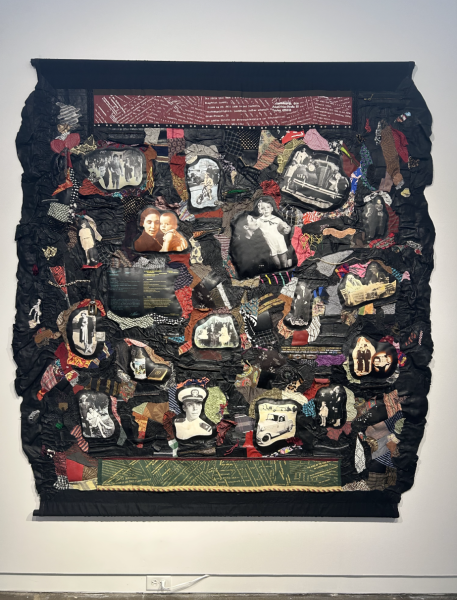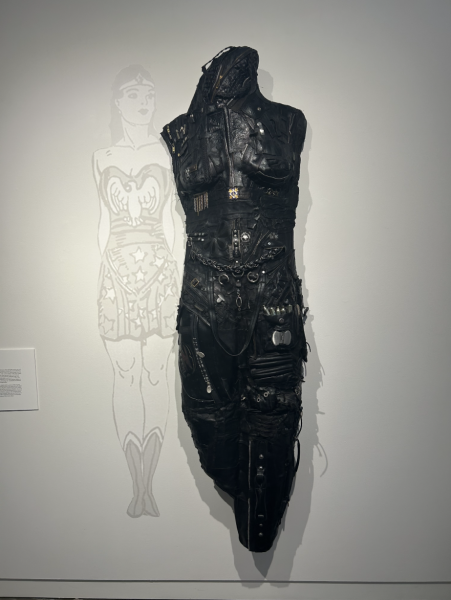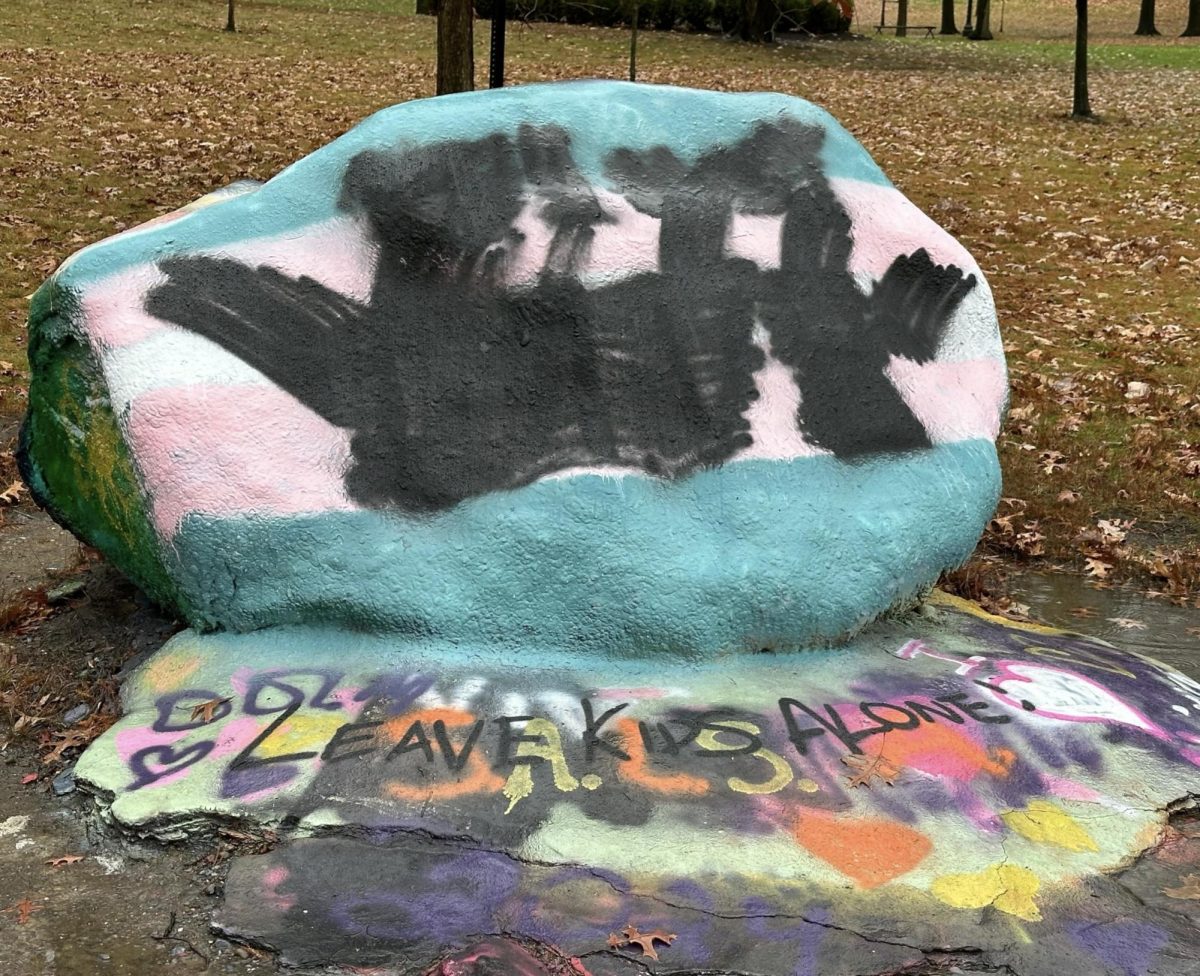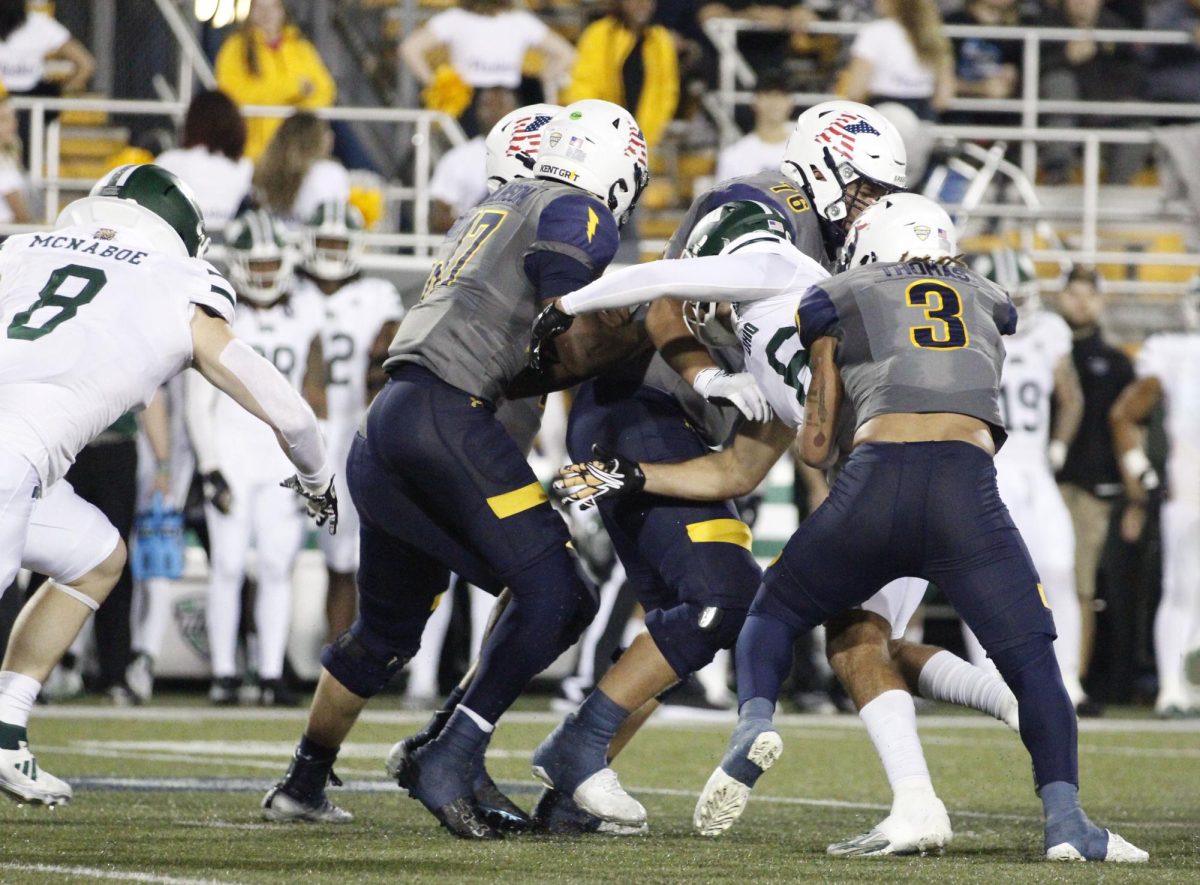The Center for the Visual Arts is now the temporary home to Holocaust Heroes: Fierce Females, which first opened Aug. 22 and will be displayed through Sept. 29.
Linda Stein, a visual artist and social justice activist, created the art exhibition and was first inspired to explore this topic after she had to flee her studio in Manhattan, New York, because of 9/11.
“At one point I saw the tower just go straight down and it just disappeared, so I ran for a whole day and didn’t come back to my studio for almost a year,” Stein said. “I started thinking about protection, and I did a video about running for protection, and then I thought of the Holocaust and how protection was hardly there at all.”
Knowing that she wanted to focus on the Holocaust through a lens of protection, Stein thought about who came to mind as protectors during times of upset and war.
“Were they all men who were protectors?” Stein said. “You normally think of a protector as a man, and I thought, ‘That’s not right.’”
Some of the women Stein researched for her exhibition included Anne Frank, whose diary was Stein’s first introduction to women’s experiences in the Holocaust, and Nancy Wake, a wealthy woman living in Paris who led hundreds of refugees to safety.
Stein met with Wake’s son, Raymond Learsy, in 2019 to talk about his mother’s experiences during the Holocaust and how she played a role of protection.

“She did what was so very different from the average housewife,” Stein said. “She took charge, arranged for their leaving, arranged for everything, and I thought that was so very interesting. An average housewife, or at least one with means, who took the reins from her husband and made the rules.”
The entire conversation between Stein and Learsy is played on a TV monitor in the exhibition, so viewers can see Learsy’s first-hand account of Wake’s story.
Among the real-life heroes in Stein’s artwork, which showcases their photographs in a series of tapestries, are several fictional female heroes who represent protection, including Wonder Woman, Lady Gaga and the Girl with the Dragon Tattoo.
The exhibit features a life-sized sculpture with a leather superhero suit to represent Wonder Woman. Other parts of the gallery include more symbolic representations of women’s experiences during the Holocaust.

Displayed multimedia boxes containing spoons were representative of the gruesome conditions faced during the time period. Those in the Holocaust often only consumed watery gruel for food and putting their mouths to the container would risk an infection, which is why the spoons were lifesavers, Stein said.
The exhibition has included special events in the past week, with Stein giving a lecture on the artwork and stories behind it, as well as students from an art class performing an interpretive dance in relation to the theme on Friday.
Audrey Larlham, senior art education major, read the book by Stein, which shared the same name as the exhibition and is looking forward to performing in the symbolic dance after learning about its meaning.
“Our interpretive dance is in support of the main themes, which is being a brave upstander, not being a bystander, and choosing bravery in everyday circumstances,” Larlham said. “A lot of women that are showcased in the exhibition are heroic, and they did big things, but she also emphasizes that you don’t necessarily have to be this groundbreaking. Everything matters.”
Larlham was especially encouraged that the exhibit and dance does not focus solely on the hardships women faced during the Holocaust, but on their accomplishments through acts of bravery, she said.
“The Holocaust is obviously a very tough subject, but you don’t feel bogged down while you’re there, you feel uplifted, and I think a lot of that has to do with the importance that we’re putting on the figures’ lives, not necessarily their deaths or the people that perpetrated them,” Larlham said. “They’re not being looked at as victims, they’re being looked at as protectors and heroes.”
For Larlham, this dance is inspiring to her because of its subject matter. Furthermore, it has made many of the performing students step outside of their comfort zone in order to honor the heroes through their performance.
“I was terrified, but then once you really have the support of the students around you, and know what you’re dancing for, it’s almost like a little baby act of bravery just to stand up past your own fear of vulnerability to showcase something that’s important,” Larlham said.
Kayla Gleason is a reporter. Contact her at [email protected].








